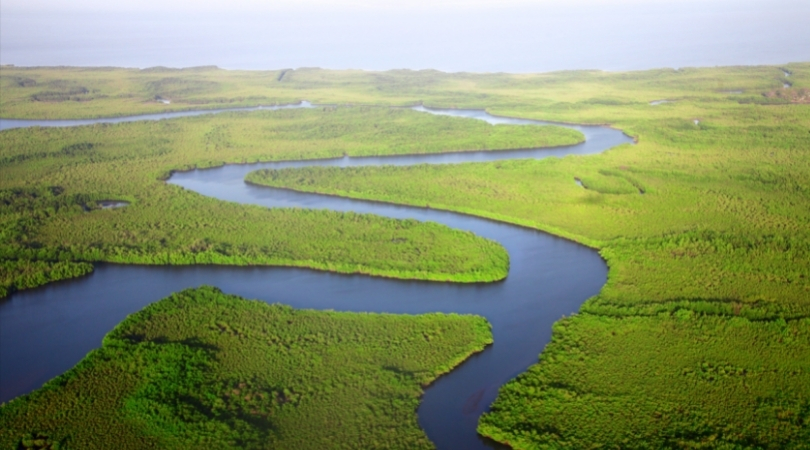Just in July 2021 alone, flooding has occurred in many countries and states in Europe, United States and Southeastern Asia. The climate change accelerates and so does the extreme weather conditions, of which flooding is one of the most visible ones. Heavy rainfall that happens within a short period of time can make water to rise quickly and cause destructive flash floods.
Floods are the most deadliest and destructive natural disasters ever experienced in the U.S. We often connect heavy rain with thunderstorms, hurricanes, tropical cyclones, typhoons and other forms of violent wind. Sudden flash floods can happen anywhere and at any time. No area or environment is free from flash floods.
Climate change impacts part 1
1. Can occur anywhere and at anytime
A flash flood forms as a consequence of heavy rain, usually in less than 6 hours. Flash floods are more common in urban areas where there is more hard surfaces (paved streets) and the amount of water is too much for the drains and sewers to handle.
Flash floods can happen in rural areas too, in areas immediately next to river basins and where the reliefs are larger. If the soil is soft (mud) and there is no trees and other vegetation to soak the rainwater, flash flood can cause mudslides and do significant harm to the properties, agriculture and cut the power supply. In July 2021, flash floods made devastating damage in European countries; Germany, Belgium, Netherlands, Italy, France, Austria, Czech Republic, Luxembourg, Romania, Switzerland and UK. More than 200 people died due to the floods and hundreds either lost their homes or found them inhabitable. It will take years to rebuild the cities and countryside areas as they were before the floods.
National Geographic Flood safety tips article provides a practical guide how to keep safe before a flood, when a flood is imminent, during a flood and after a flood.
2. Creates destruction within hours
Heavy rainfall can form a flash flood that creates a fast moving influx just within hours. In an urban environment the influx can take with it everything that comes along its way, such as dirt, any floating items (plastic, wood), bicycles, even cars and entire streets. Just 30cm of water is enough to move a car and 5cm of water to make a human fall.
The Earth is covered by only 2% of floodplains. A floodplain is the area next to a river bed that is frequently covered by water due to high water discharge from the rivers and rainfall. These “natural sponges”, such as wetlands absorb fast the rainfall that the other land areas cannot absorb. The floodplains protect from flood risks and restore healthy ecosystems. By European Environment Agency (EEA), the European floodplains have reduced by 90% in the last few decades leaving the areas next to rivers less effective for flood protection. Restoring floodplains would generate important socio-economic and environmental benefits.
3. Infrastructures are not ready
Consequently neither our cities or countryside areas are ready for flash floods. As more (un)natural disasters are taking place in the future, how cities and towns can prepare flood resilient infrastructure? Firstly, floodplains, such as existing wetlands must be protected and restored. Secondly, the cities and rural areas need to adapt the drainage, water supply systems, transport infra and buildings to take on heavier rainfall.
Many cities lack green spaces and vegetation. However, paving the streets increase flood risk if the drainage systems are poor. Both the buildings and the public areas need to improve and be redesigned to include better drainage channels and even porous and permeable pavements. Buildings could have green roofs that help to soak rainwater. Systems for rainwater collection must be developed to adapt to short-time heavy water take.
Providing a resilient and sustainable storm and flood prevention plan needs collaboration between the governments, cities and communities. This includes creating surface water flood maps that are up to date and communicated to the people living in these areas. Communication is crucial to prepare people who face floods increasingly close to their homes.
4. Climate change increases flash floods frequency
The intensity and frequency of flash floods is projected to increase in the coming decades due to climate change. Scientists and researchers agree that the warming climate increases extreme weather events such as heat waves, wildfires and floods. Hotter atmosphere can hold more moisture and thus the storms become more intense.
The Intergovernmental Panel on Climate Change (IPCC) published today the Climate Change 2021: The Physical Science Basis report. I recommend reading at least the headline statements of the Sixth Assessment Report (AR6) that sums up the climate’s current state, possible future scenarios and climate action. Link to the summary can be found here.
In November 2021, the COP26 brings global leaders, scientists and policy makers together in Glasgow to accelerate the climate action. It is important to understand that the climate action is not too late. All countries, businesses, communities and people need to come forward in the efforts that aim at keeping the global warming under 1.5 degrees Celsius.

